In fall, there’s no better place to enjoy leaf peeping than one of our 62 national parks. While some parks light up in winter and others bloom in full each spring, these 11 national parks are ideal for an autumn visit. The once-green trees and shrubs burst into a kaleidoscope of colors, ranging from fiery reds and oranges to golden yellows and deep purples. The colors are bright, the crowds are light, and if you make it to two you’re doing it right. These are the best national parks to visit in the fall.
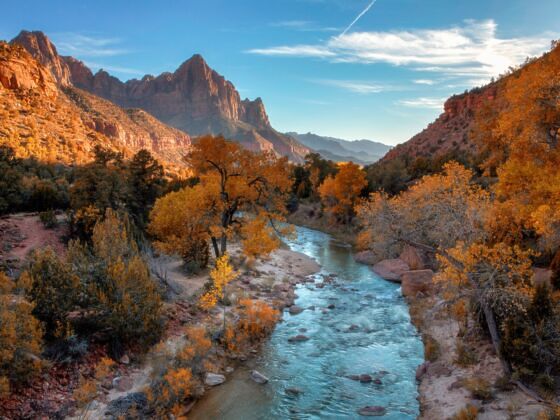

These Spectacular Leaf Peeping National Parks Show Their True Colors in Fall
Great Smoky Mountains National Park — Tennessee and North Carolina
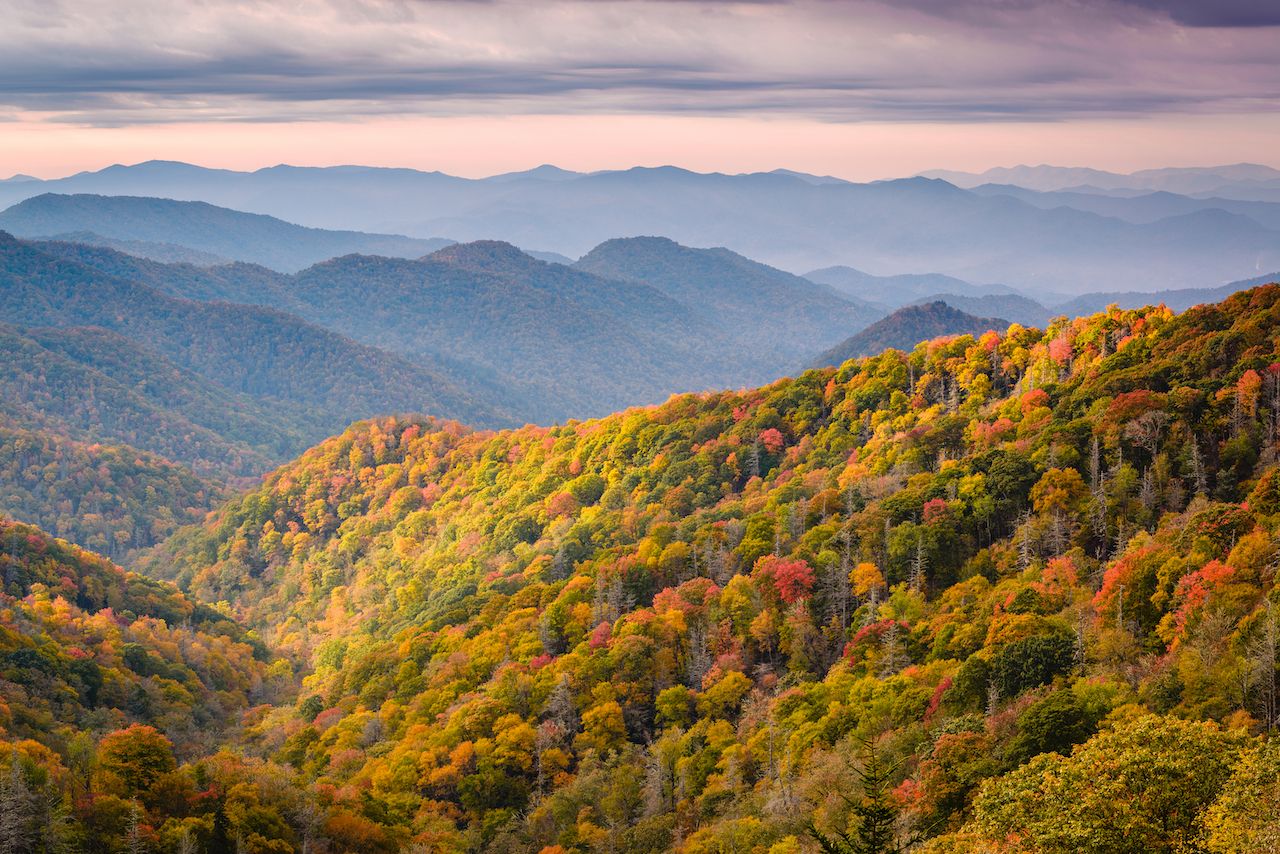
Photo: Sean Pavone/Shutterstock
Great Smoky Mountains National Park is the United States’ most visited for a reason: mist-covered mountains, hiking trails flanked by waterfalls, and stunning vistas everywhere you look. Fall is an ideal time to visit, as the park’s sublime annual rendition of yellows, reds, and greens stretch from the park’s low point at Newfound Gap nearly to its 6,643-foot-high summit at Clingman’s Dome. If you’ve never taken a guided canopy tour, now is the time to do so, as you’ll soar above the colors to take in a view that few get to see from such an angle. One hazard does present itself: being so wowed by the spectrum of colors below you that you forget to monitor the approaching zip line station. Try your best to not forget to slow down.
Death Valley National Park — California
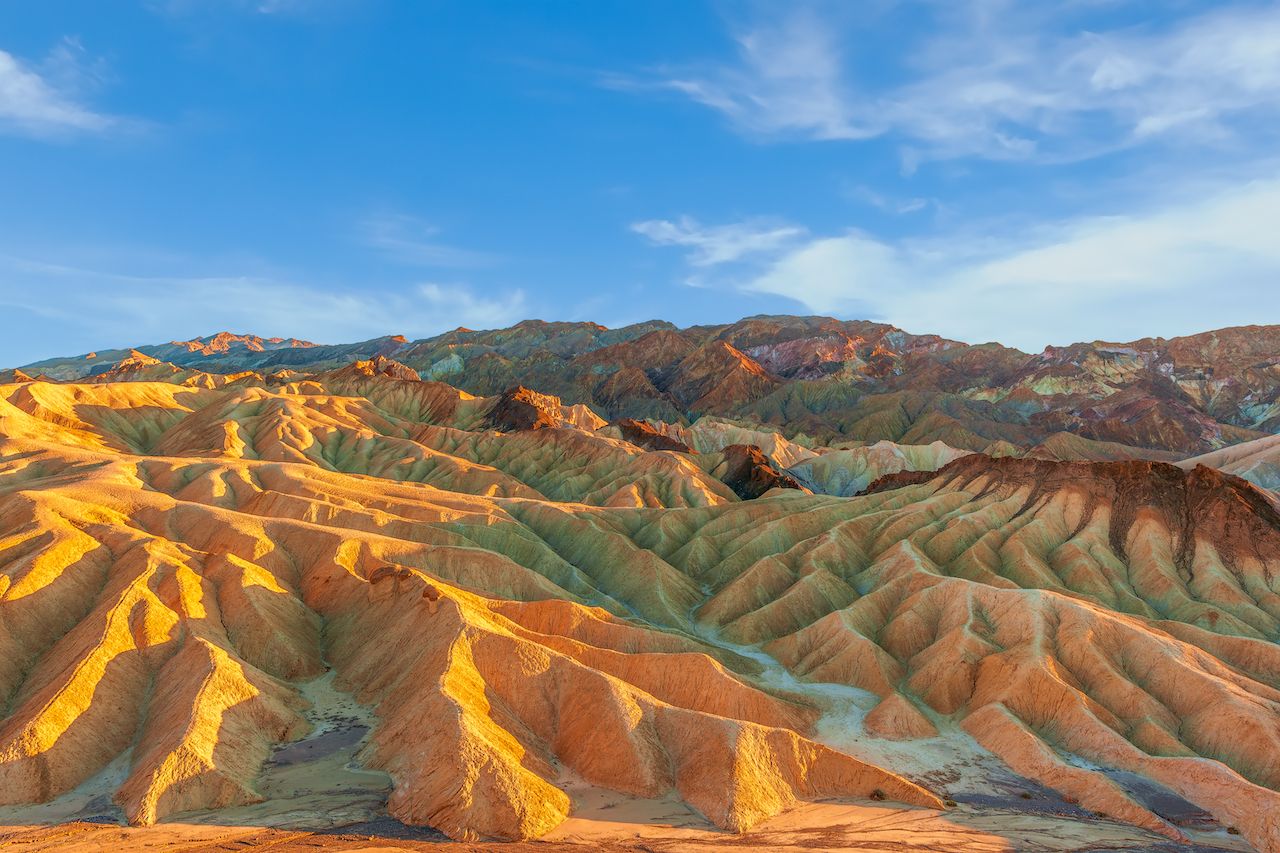
Photo: VIKVAD/Shutterstock
Death Valley National Park is the perfect destination for those out west getting a late start on their autumn road trip. The best time to visit is November, when the triple-digit temperatures are gone and the Oasis at Death Valley is open for the season. Death Valley runs on an opposite schedule to most national parks as its busy season is winter. By visiting before the holiday rush, you can hike Badwater Salt Flat or Golden Canyon without a snakeline of people. Book a spot at one of the park’s campgrounds in advance and plan to wake up early; there’s nothing like waking up to watch the sunrise above Badwater Basin.
Zion National Park — Utah
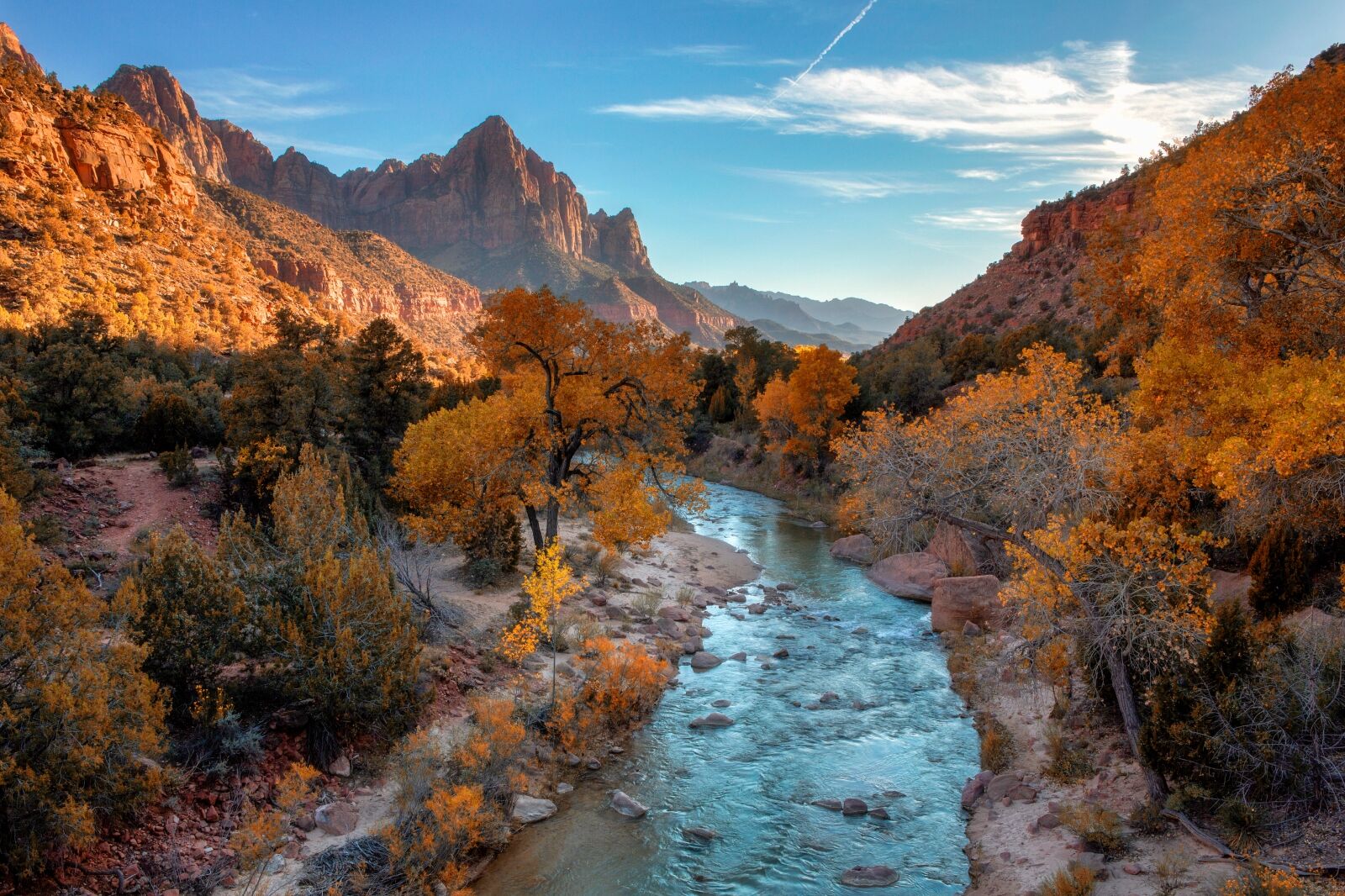
Photo: Bill45/Shutterstock
Zion National Park, a breathtaking landscape of sandstone cliffs and canyons, undergoes a remarkable transformation during autumn. As the temperatures cool and the days shorten, the park bursts into a kaleidoscope of colors. Make a B-line for the Virgin River. As the leaves of the cottonwood, ash, and maple trees begin to change color, they paint the riverbanks in hues of golden yellow, burnt orange, and deep crimson. You can also hike through the Narrows, a slot canyon best explored during the cooler months, or take a scenic drive along the Zion-Mount Carmel Highway. The best time to witness the peak foliage here is from late October to early November.
Acadia National Park — Maine
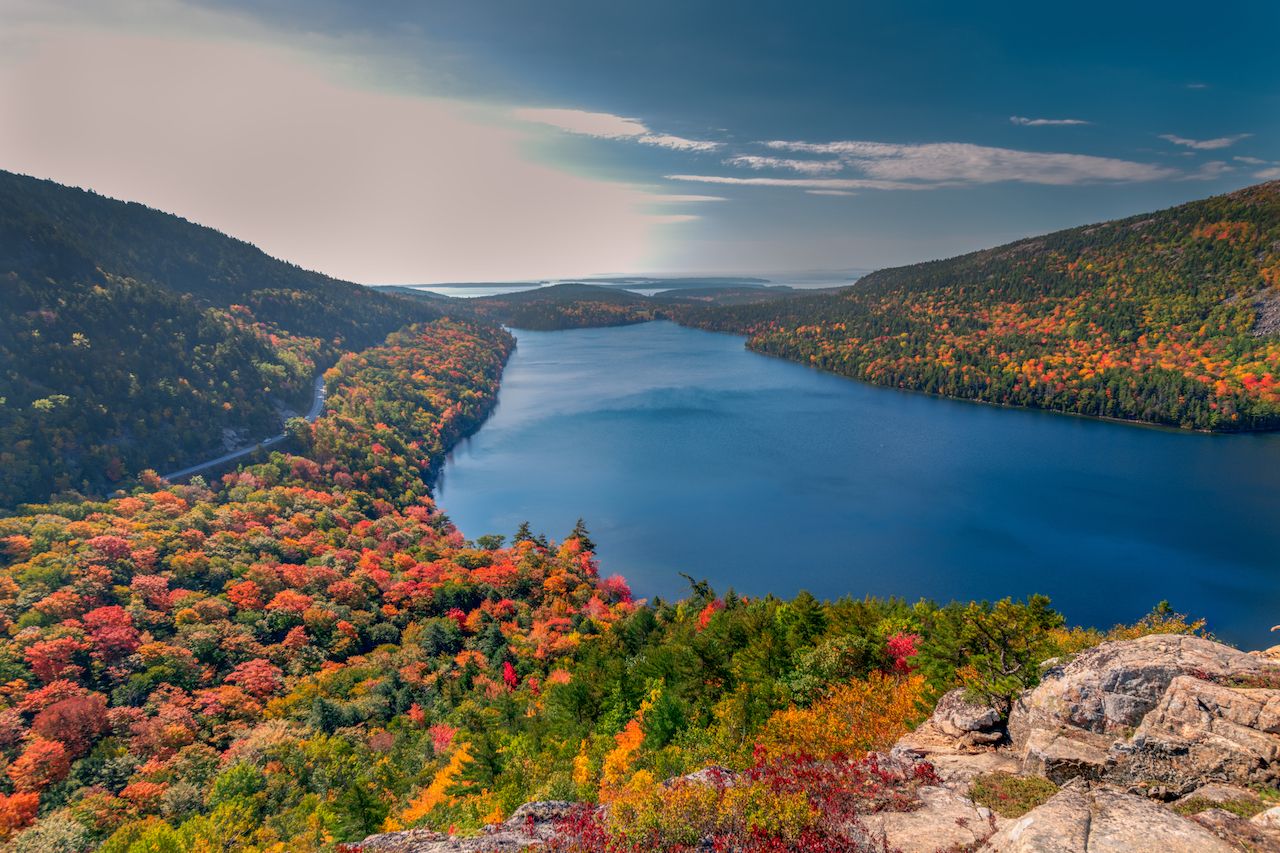
Photo: Skyler Ewing/Shutterstock
Nowhere tops New England for fall foliage. Acadia National Park is the epitome of why, as birch, maple, hemlock, and both red and white spruce bloom with the changing season all within an approachable confined area covering 47,000 acres. Add deep blues of the surrounding Atlantic waters and you have the perfect recipe for a scenic hike. The foliage tends to peak in October, but the park is gorgeous even once most of the leaves have fallen. After a day of hiking and exploring the park you’re bound to be hungry. That’s a good thing because fall is also prime season for fresh-caught seafood along the New England coast. You’ll see the boats out on the water from the early morning, and when the sun begins to set over Cadillac Mountain, the catch is ready at the restaurants of nearby Bar Harbor. Plan your entire trip from start to finish with Matador’s travel guide to Acadia National Park.
Traveling to a national park? Check out Matador’s national park accommodations guides:
- These Airbnbs in Acadia National Park Surround You With Natural Beauty
- The Best Places to Stay in and Around Zion National Park
- The 17 Best Airbnbs Near Yosemite National Park
- 8 Unique Airbnbs by Grand Canyon National Park
- These Yellowstone Airbnbs Near Each Entrance Make for the Perfect Gateways to the Park
- These Stunning Zion National Park Airbnbs Make the Perfect Desert Basecamp
- Take a Fun Escape Into Nature at These Airbnbs Near Glacier National Park
Arches National Park — Utah

Photo: ORCHID LADY/Shutterstock
At Arches National Park, you’ll find the world’s largest collection of intact red sandstone arches — more than 2,000 of them. And while they’re just as beautiful in summer, there is one major perk to visiting the park post-September: it’s much less hot. Summer temperatures in the park routinely hid the upper-nineties or above. In fall, the average temperature drops starkly to 85 degrees in September and 71 degrees in October. Hiking out into Devil’s Garden is much more tempting without the prospect of having to lug gallons of water along with you. And though Moab and its surrounding canyon country is busy in the fall, the visitors are of a different stripe than the summertime crowd. You’ll find plenty of mountain bikers, off-roaders, and backpackers, but far fewer people crowding into the national parks.
Rocky Mountain National Park — Colorado
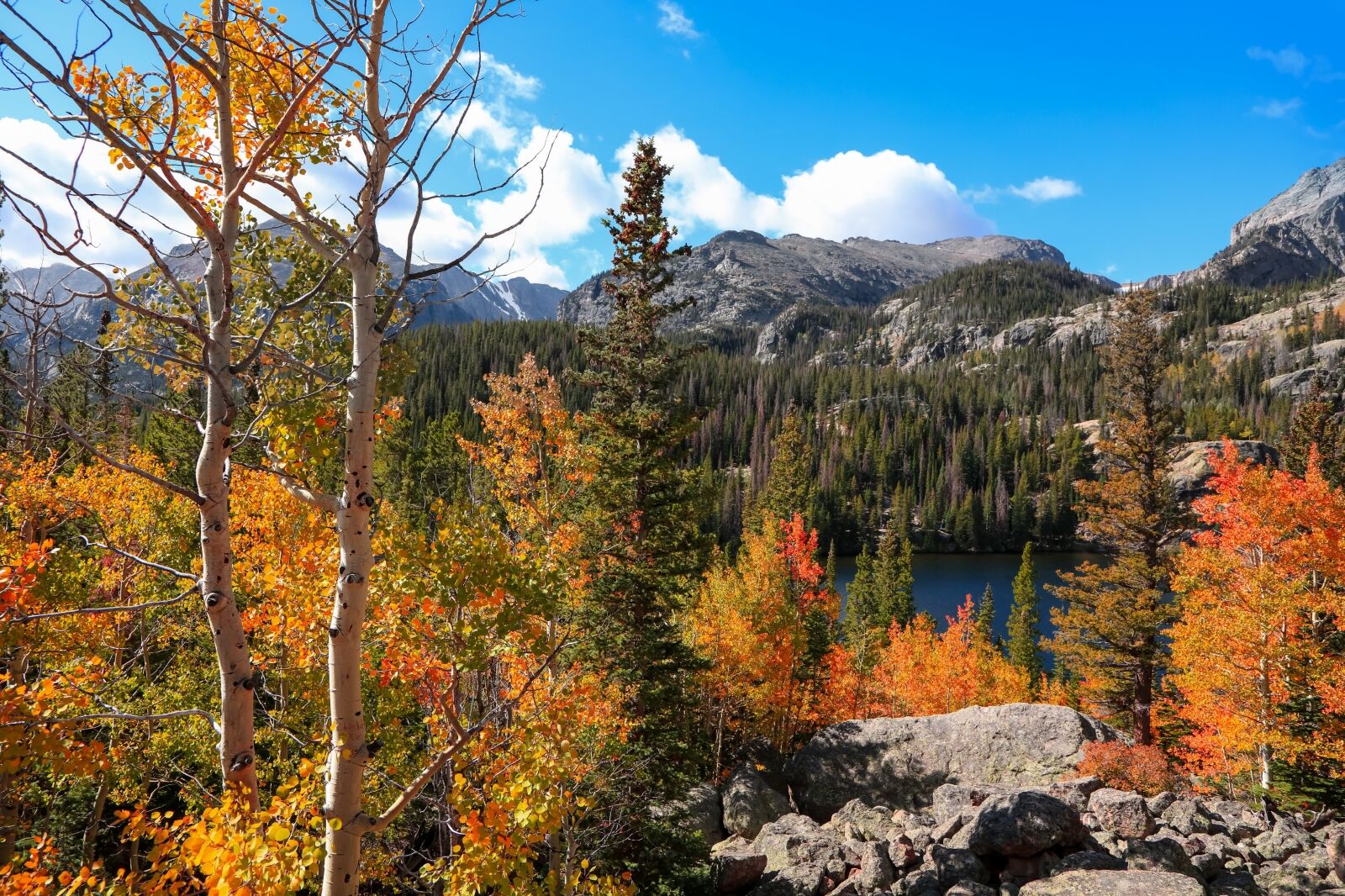
Photo: SNEHIT PHOTO/Shutterstock
One of the most spectacular places to witness the fall foliage in Rocky Mountain National Park is along Trail Ridge Road, North America’s highest continuous paved road. As you ascend, you’ll be greeted by stunning vistas of aspens, cottonwoods, and other deciduous trees ablaze with shades of yellow, orange, and red. The contrast between the colorful foliage and the snow-capped peaks of the surrounding mountains is simply breathtaking. The best time to visit to experience the peak fall colors is from late September to early October. The temperatures are mild and comfortable during this time, making it ideal for hiking, camping, and exploring the park’s many trails.
Grand Teton National Park — Wyoming
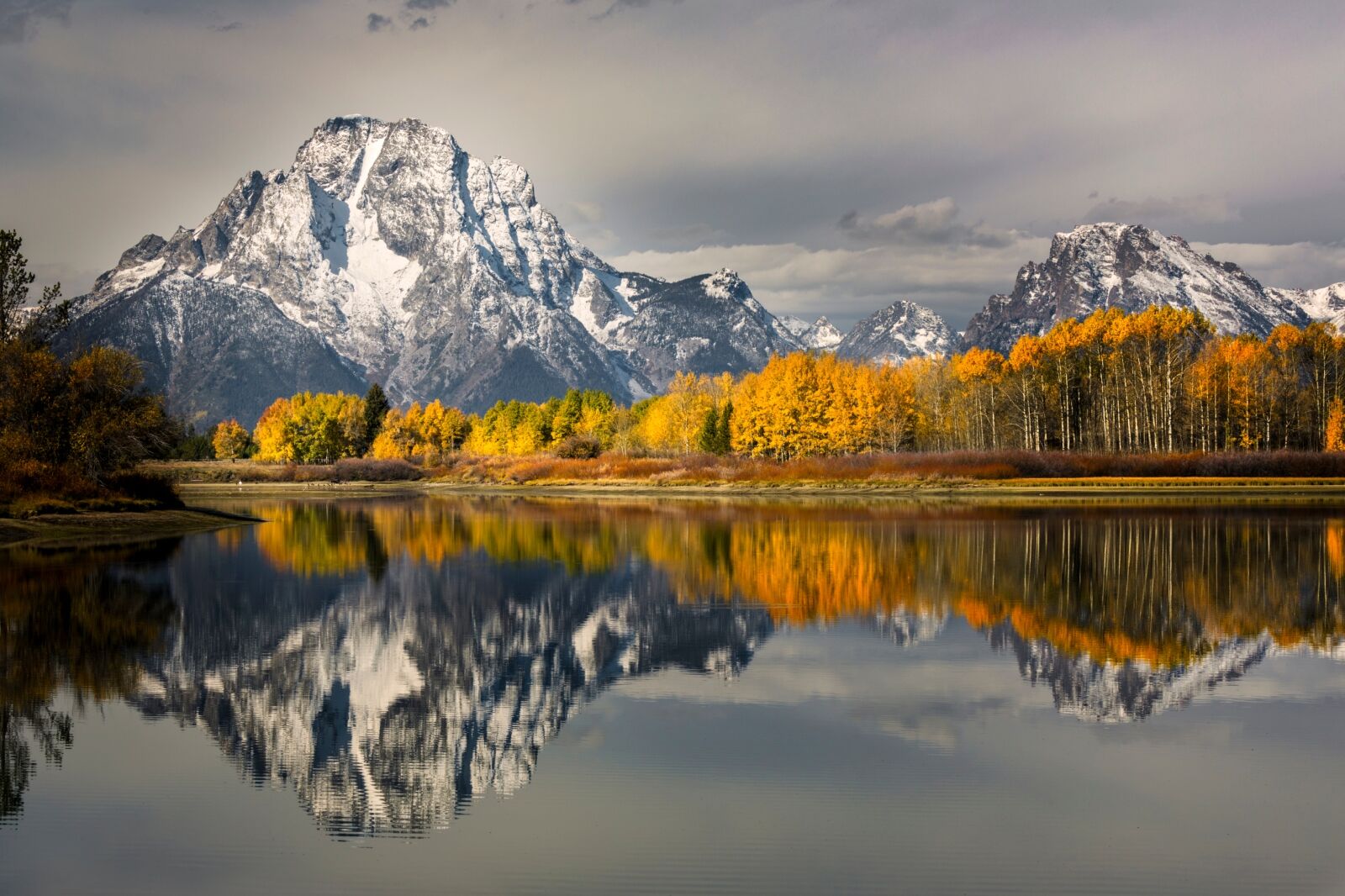
Photo: Danita Delimont/Shutterstock
Fall in Grand Teton National Park is magical. The bright green leaves of the aspens begin to turn vibrant shades of yellow, creating a stunning contrast against the Teton Range. The park’s meadows and forests are also adorned with other colorful foliage, including cottonwoods, maples, and birches. Fall is also a migration time for many of the park’s animals. Bison, pronghorn, and elk begin moving south to their winter grounds, following the paths their ancestors took thousands of years ago. The annual pronghorn migration is particularly impressive as they gather in large groups to head south to their winter homes near Pinedale, Wyoming. This 150-mile migration is the second longest land migration in the Western Hemisphere.
Indiana Dunes National Park — Indiana
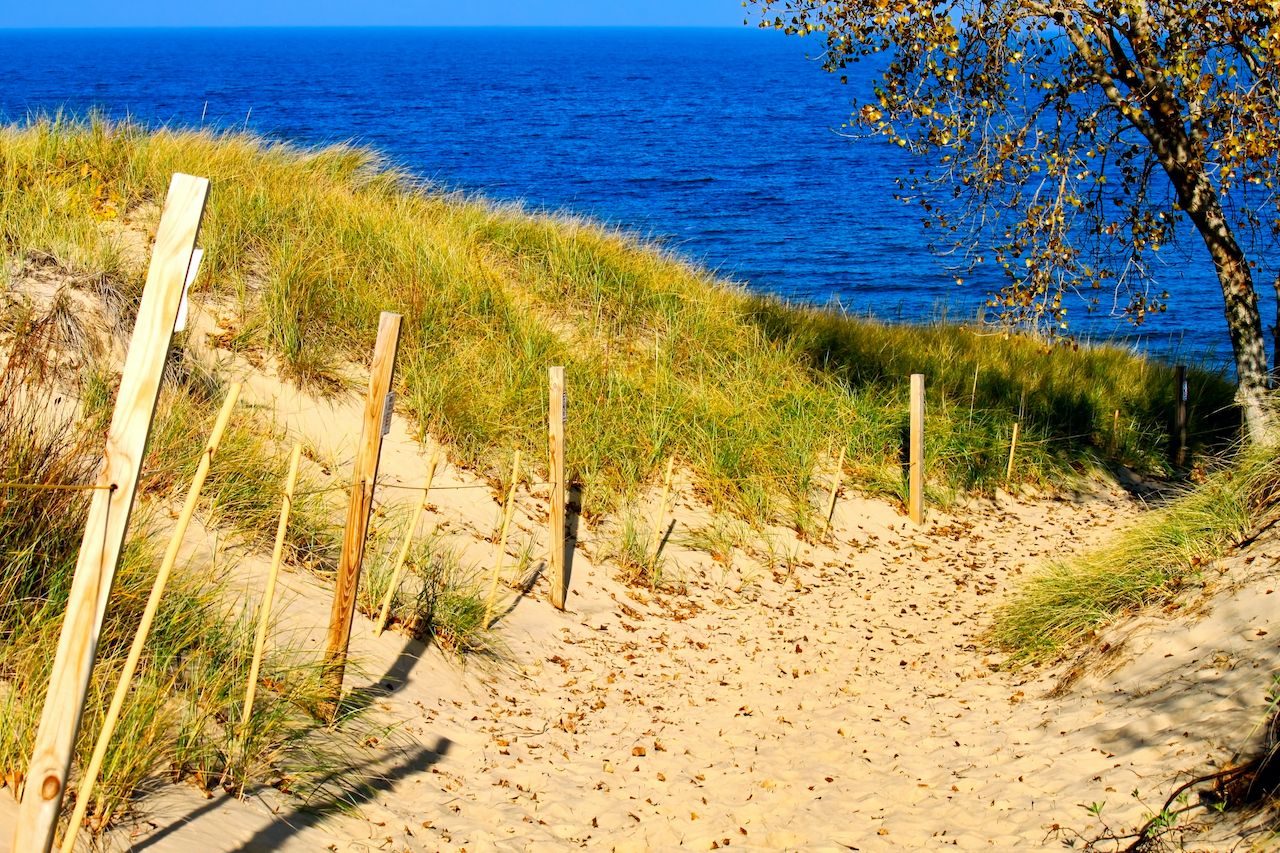
Photo: Shelly Bychowski Shots/Shutterstock
The newest national park is a fantastic spot for an autumn weekend road trip in the Midwest, most notably for one specific activity: geocaching. For those unfamiliar, geocaching consists of using an app or a GPS device to locate a predetermined, hidden item or a location based on its coordinates. What better place to do this than amongst a 17,000-acre park full of sand? The park has numerous geocaching spots, most notably the Mount Baldy Beach Trail. Check out the park’s geocaching page for the full rundown of where to try this real-life hide and seek activity and how to make the most of it. Other activities at the park include hiking across the dunes themselves, chilling on the beach as the gentle waves of Lake Michigan lap the shore, and counting how many of the 1,100 native plant species you can identify within the park’s grounds. If you arrive before November 1 and wish to stay the night, the Dunewood Campground is open for reservations.
Shenandoah National Park — Virginia
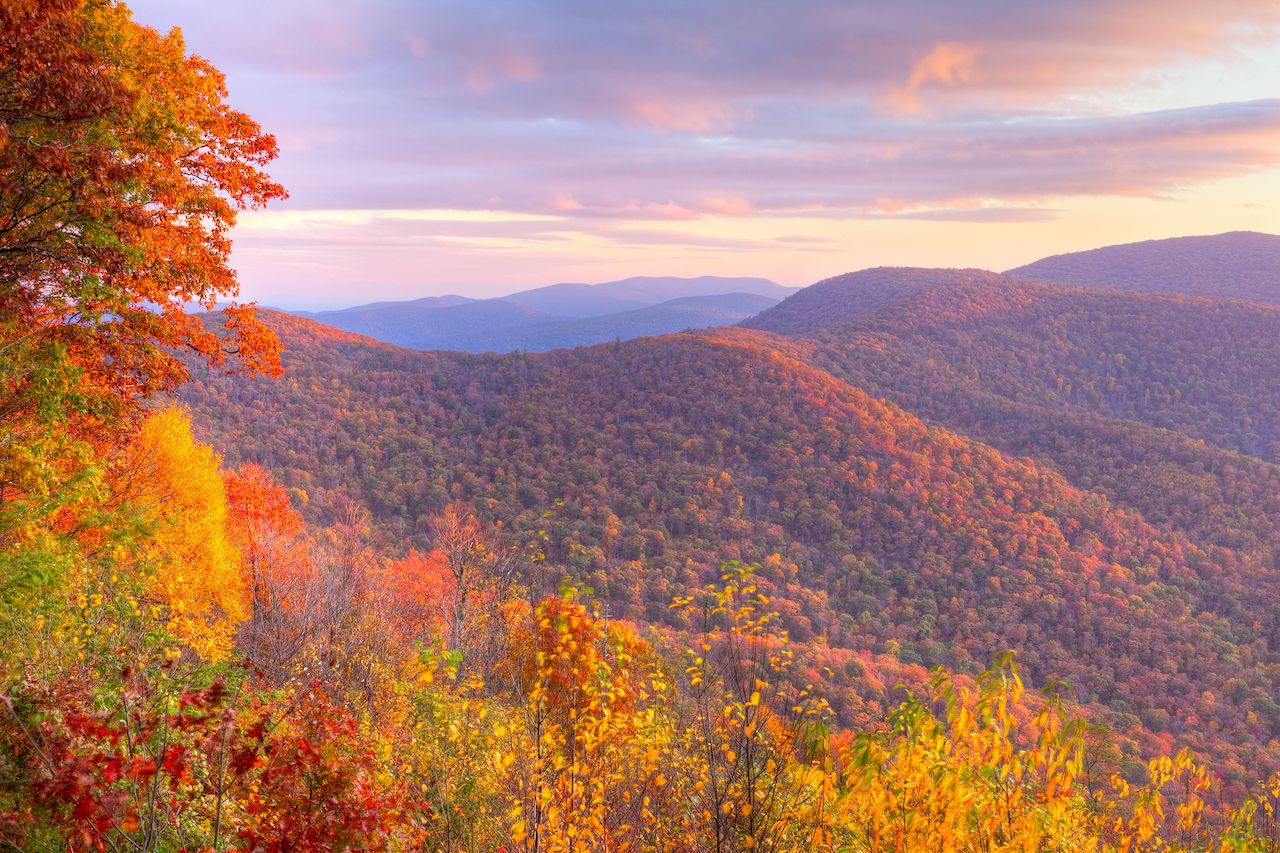
Photo: Anton Foltin/Shutterstock
Shenandoah National Park is best in late September and early October, when the summer campers have vacated the campgrounds but it’s not yet too cold for an overnight stay. Overnight at the Big Meadows Campground and, in the morning, cruise the 105 miles of Skyline Drive, taking in the autumn colors. If you feel motivated, hop out occasionally to set foot on the adjacent hiking trails and get more up close with the forested Blue Ridge Mountains. If you’re up for a challenge, walk the Bearfence Mountain Trail, across its scramble to the rocky overlook out across the park. Though it’s only a bit over a mile, the scramble necessitates good hiking shoes. You’ll be rewarded with stunning views of, well, mostly trees blanketing undulating hills. But in autumn, that’s enough to take your breath away.
Cuyahoga Valley National Park — Ohio

Photo: thanasarn/Shutterstock
The peak of autumn foliage in Cuyahoga Valley National Park occurs around the third week of October. Sugar and red maples are often the first to display spectacular reds, yellows, and oranges, followed by white and pin oaks, which turn a brownish red. Black gum, dogwood, and northern red oak also turn various shades of red, while tulip trees, bigtooth aspens, silver maples, and black maples change to yellow. The Oak Hill Trail, Brandywine Falls and Gorge Trail, Ledges area trails, and Everett Covered Bridge are popular destinations for leaf peeping. If you’re planning a photography trip, keep in mind that warm, sunny days and cool, frost-free nights are ideal for producing the most vivid colors, while cloudy days and excessive rainfall can dull them.
Mammoth Cave National Park — Kentucky

Photo: TravelEatShoot/Shutterstock
Mammoth Cave National Park is unique in that there is no access gate at the front of the park. It’s always open, and always a great place to take the kids. Here, the Green and Nolin rivers converge to offer engaging canoe and kayak runs through the park along with fishing and backcountry and campground camping (with a permit or reservation). But the main attraction is the Mammoth-Flint Ridge Cave System itself, part of which is encompassed by the park. This is the world’s longest known cave system, and has been inhabited by Native Americans for more than 6,000 years. Fall is a popular time to visit the park as the surface temperature inside the cave cools a bit, reaching as low as 54 degrees deep inside. Your best bet to guarantee entry into the cave is to make a reservation with the park in advance. If possible, take the Frozen Niagara Cave Tour, where the colors inside the cave are eerily similar to those outside.